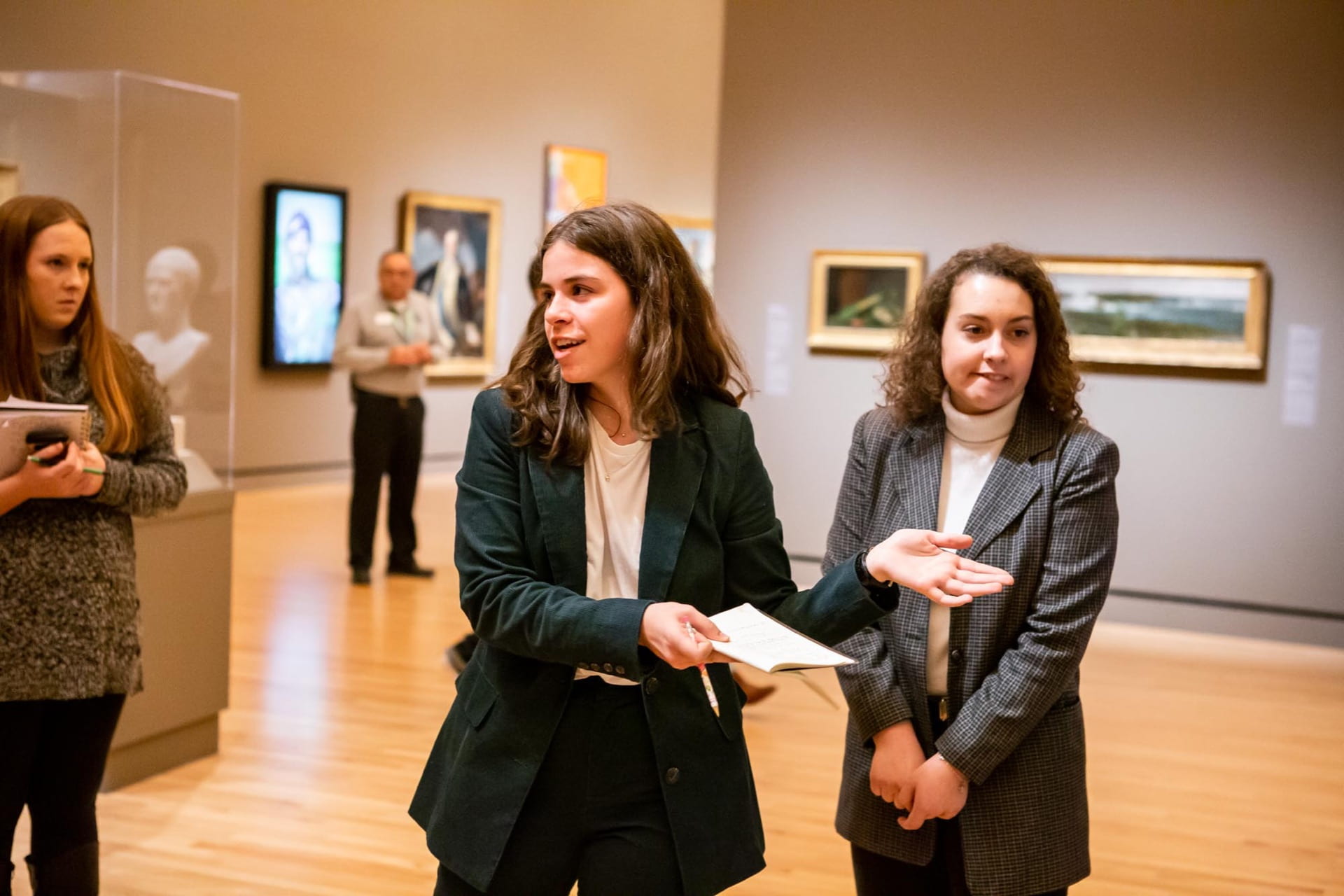Freshman Museum participant Sydney Nichols is back with a look at the Crystal Bridges exhibition “Men of Steel, Women of Wonder,” examining the museum’s selection criteria for their exhibitions as well as the reception of the show, which wrapped up in April. Sydney is a freshman Bob and Ruth Shipley Fellow from the University of Arkansas Honors College majoring in art history and English with a concentration in creative writing. Originally from Marion, Arkansas, Sydney is interested in the literary and artistic expressions of the American South. After college, Sydney hopes to pursue a graduate degree in contemporary art and museum studies.
Gathering around the boardroom meeting table that is now so familiar to the Museum 12, our teachers for this past week started with a statement that dismantled the glossy, seemingly flawless presentation of exhibits, programs and events at Crystal Bridges:
“Everything begins with an idea.”
And so began the museum’s newest exhibit, “Men of Steel, Women of Wonder,” arranged by Assistant Curator Alejo Benedetti. Director of Communications Diane Carroll and Deputy Director Sandy Edwards explained to our class that Benedetti’s exhibition was chosen only after an exhaustive evaluation by a strategy group comprised of heads from each department of the museum. Questions that help to determine whether an idea for exhibition will be realized include: Is it profitable? Is it relevant to a wide range of people? Is it unique? Beyond meeting these criteria, “Men of Steel, Women of Wonder” seemed an opportune idea for the museum to pursue considering its local and national timeliness. More superhero movies are scheduled to debut in 2019 than in previous years, and Little Rock, Arkansas, is set to host a comic convention in April. As early spring is not a typical time for visitors to plan a road trip to Northwest Arkansas, the museum has positioned itself to attract guests who see the exhibit as a fitting addition to their existing travel plans.
If an idea survives these early stages of scrutiny, the museum’s communications team immediately starts its work, identifying the art pieces throughout the curated group that most effectively convey the themes of the exhibit. At Crystal Bridges, this process is as simple as distributing different-colored stickers to a focus group of employees, volunteers and other community members. The colored stickers represent the different personal reactions within the focus group to pieces in the exhibit. This data is condensed onto a single sheet like the one pictured to the left, and the museum’s marketing team reclaims authority, selecting the images that will eventually decorate billboards, street banners, and walls of the museum.
Despite extensive preparation of physical advertisements, the museum’s arguably most effective communication happens on social media platforms. These pages help to prompt repeat visitation by promoting exhibits through the eyes of museum guests themselves, often reposting photos captured and posted by the accounts’ followers.
On February 14th, however, this tactic created a stir among locals. Crystal Bridges posted a photo of a same-sex couple in front of a piece in Benedetti’s exhibit. The photo mirrors Rich Simmons painting “Between the Capes” which shows Batman and Superman kissing. While the majority of comments the photo received were supportive, a few comments criticized the museum for displaying a piece that does not realistically depict the superheroes. Conservative Facebook groups brought the controversy to the attention of school superintendents, worried that children would be prematurely exposed to mature topics while on school fieldtrips to the museum. Crystal Bridges refrained from responding to criticisms posted on their platforms, but they felt it necessary to assure the visiting schools that their docents are specially trained to only discuss pieces that are age appropriate and to address questions should they arise. As for those in opposition to the exhibition on account of its “misrepresentation” of classic heroes, Crystal Bridges uses its website as a platform to explain “some are represented in familiar and heroic ways, while others are exploring mature topics like race, gender, sexuality, and national identity.”
Even with minor criticisms, our teachers explained that Benedetti’s exhibit has generally been very successful thus far. Crystal Bridges staff was pleasantly surprised to have the exhibit included in the Arkansas Democrat Gazette’s “Weekend Ten” and summarized in the Wall Street Journal. Running with an idea that initially felt niche, the museum has found a way to elevate art that explores relevant social issues through a familiar lens, attracting new and repeat visitors to Crystal Bridges.

